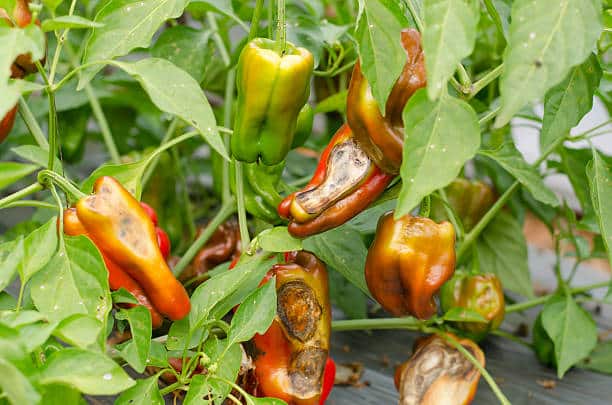
Building a food secured Africa

Building a food secured Africa

Anthracnose in Pepper and Tomatoes is one of the most infectious fungal diseases caused by Colletotrichum spp. There are 200 known species of Colletotrichum. It is known to infect a wide range of pepper plants and related solanaceous crops (tomatoes included).
The disease is characterized by the appearance of small black circular spots on the skin of the fruits that spread in the direction of the long axis, thus becoming oval in shape. As the infection progresses, the spots become either diffused and black, greenish, or dirty grey, or they are markedly delimited by a thick and sharp black outline enclosing a lighter black or straw-colored area.
Here are more you need to know about Anthracnose disease in pepper & tomato
The fungus can survive as small, black microsclerotia in the soil and as acervuli in plant debris. The pathogen may also be seedborne and can cause infections of seedlings in seedbeds.
Anthracnose thrives in a cool climate. Extended periods of leaf and fruit wetness due to frequent rain and overhead irrigation are favorable for disease development. The lower leaves and fruit may become infected first by germinating microsclerotia and then by splashing spores from soil and debris. The longer the fruit surfaces are wet, the greater the anthracnose severity. The disease causes both pre- and post-harvest fruit decay, thereby reducing the marketability of produce.
The management of anthracnose disease in pepper & tomato requires an integrated approach that includes preventive practices and control measures.
👉🏽Use pathogen-free seeds and seedlings because pathogens persist in seeds from infected fruit. Therefore, buy certified seeds.
👉🏽Rotate crops and avoid plants like potatoes, pepper, tomato, egg plant, and cucumber for at least 2 years to prevent a buildup in the soil.
👉🏽Properly sanitize the farm environment by controlling weeds, destroying plant residue, and removing infected plants and fruits.
👉🏽Mulch the soil to minimize soil splashing onto the fruit and lower leaves.
👉🏽Maintain a well-drained soil and avoid overhead irrigation.
👉🏽If there is favourable condition for infection or if there is a history of anthracnose, fungicide treatment can be important, especially as the fruit begins to ripen. However, a preventive fungicide program needs to start once the first fruit sets because latent infections can occur even on green fruits. Repeat fungicide applications at short label intervals during continuous moist weather ; the schedule can be extended to longer intervals in dry weather.
Note: Among the fungicides registered for tomato in Connecticut are chlorothalonil, mancozeb, azoxystrobin, and copper products. Check the label for application rates and the number of days between the last application and harvest.
It should also be noted that currently, there are no strains of peppers or tomatoes that are resistant to anthracnose.